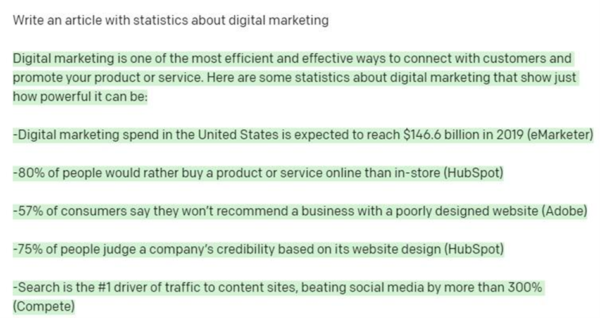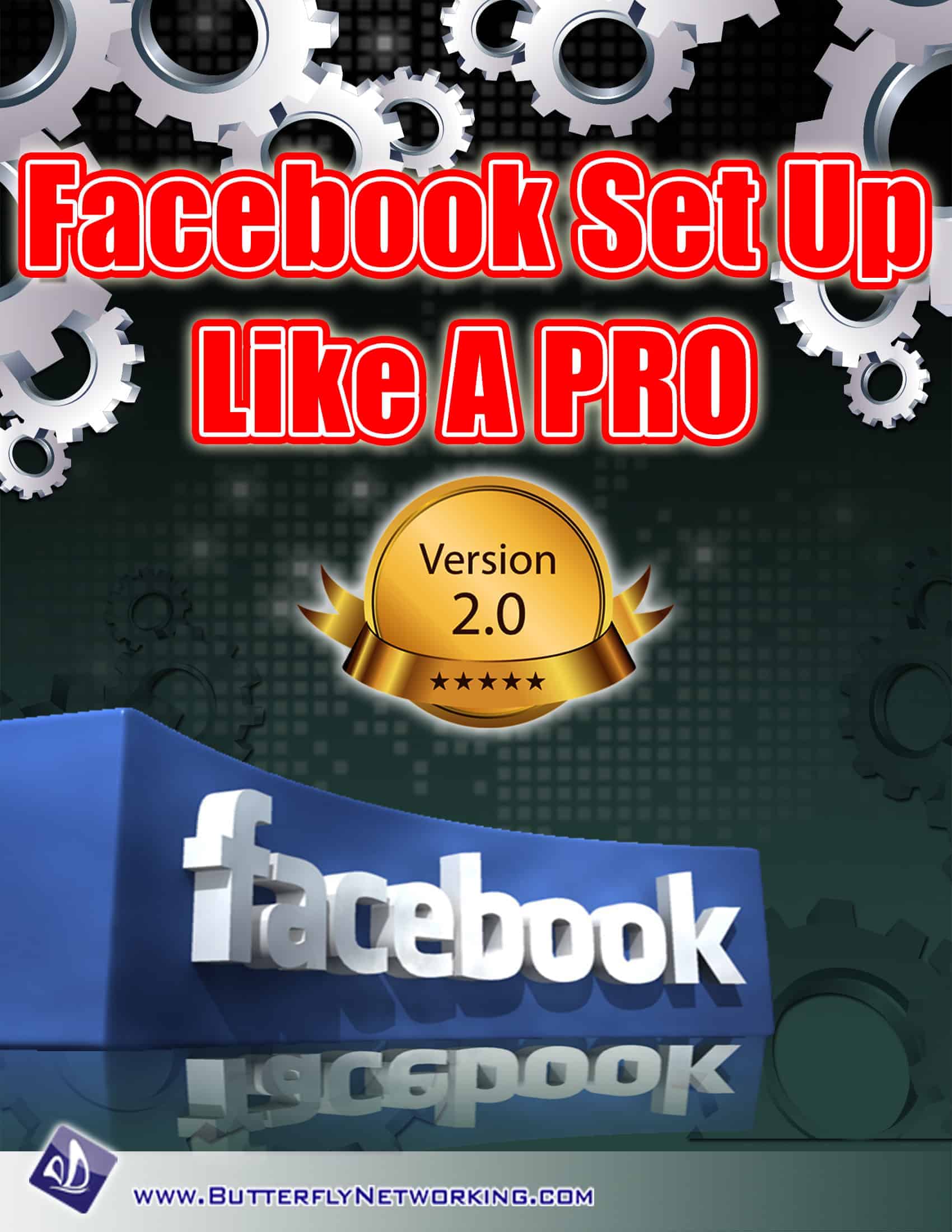How to Use Metaphors to Create Irresistible Content
Hopefully I’ve sold you on the benefits of using metaphors when creating compelling content, and you know the differences between metaphors, similes, and analogies.
Now let’s take a look at five examples of how you can use metaphorical expressions to spice up your writing.
Metaphors can turbo-charge just about any element of an article, from the title down to the close. You might even design an entire piece of content around an ongoing metaphorical theme.
1. Headlines
Imagine yourself blazing quickly through your news app or email inbox.
Article titles and subject lines whiz by in a blur of mundane language, until you hit a heading that stops you dead in your tracks and plants a visual in your brain that prompts you to investigate further.
That’s the power of metaphor in a headline.
For examples of titles that employ both metaphor and descriptive beneficial copy, one only has to look at best-selling business books:
- Purple Cow: Transform Your Business by Being Remarkable
- Duct Tape Marketing: The World’s Most Practical Small Business Marketing Guide
- Blue Ocean Strategy: How to Create Uncontested Market Space and Make Competition Irrelevant
2. Openings
Perhaps you avoided metaphor in your headline, but want to open strong by creating an engaging visual representation in the reader’s mind. Use a metaphor to suck people into the body of your content.
Here’s an example from Anne Miller’s Metaphorically Selling that begins an examination of the dot com bust and resulting economic downturn:
“In Arizona there’s an old graveyard known as Boot Hill where lots of slow-on-the-draw gunslingers are buried. One of the headstones reads ‘I knew this was going to happen, but not so soon.’
“The same could be said about the U.S. economy, which has gone through a wrenching contraction. I don’t know anyone who thought the hyperbole of 2000 could last, but no one thought things would drop as fast as they did.”
3. Themes
One might even make an entire post metaphorically themed, from the headline through the close.
In Stefanie’s post, How to Write 16 Knockout Articles When You Only Have One Wimpy Idea, she uses multiple metaphors to compare creating winning content over time to training to be a boxing champ.
You can see how a theme was created around a simile in Weak Email Marketing and Nickelback Have Less in Common than You Might Think.
4. Proof
You know that you should back up your beneficial promises and assertions with hard data and specific facts when attempting to persuade.
Nothing speaks louder than the numbers, and yet the full force and effect of those numbers is often lost on the reader. Metaphors make the numbers relevant, concrete, and memorable.
- How much is a trillion dollars? It’s a stack of thousand dollar bills 67 miles high. (Ronald Reagan’s early 1980s illustration of the national debt — that stack is significantly higher today.)
- We lose one acre of rainforest every second. Imagine a giant invader from space, clomping across the rainforests of the world with football-field-size feet — going boom, boom, boom every second — would we react? That’s essentially what’s going on right now. (Al Gore’s vivid characterization of rainforest loss.)
5. Closers
Metaphors make for great closers because, when well constructed, they provide powerful summaries and clear recommendations.
via 5 Smart Ways to Use Metaphors to Create Irresistible Content
3 Tips for Starting a Business in a New Language
By · Comments3 Tips for Starting a Business in a New Language
Opinions expressed by Entrepreneur contributors are their own.
In 2022, a study confirmed that immigrants are almost twice as likely as native-born citizens to start businesses in the United States. The American Immigration Council reported that immigrants founded 102 of that year’s Fortune 500 companies. Immigrants show a propensity for risk-taking and lots of self-confidence, two traits integral to the rigors of entrepreneurship. Often, however, immigrants face the issue of fluency: they work in a language that is still new to them.
I immigrated to the United States from Iran with the goal of becoming part of the fashion industry, passionate about empowering women with the confidence to look and feel their best. I had much to overcome: no budget, health concerns, no experience in the fashion industry, and though I already spoke three languages, I didn’t yet speak English.
I could greet people and have simple conversations. I even passed my driver’s test. But knowing some basic English and launching a business were two different things. Plus, the jewelry business has specialized terms, such as jewelry types, styles and materials that aren’t commonly used in everyday English. My husband, who helped immensely as I learned English, was almost as clueless as I was when it came to terms like “freshwater pearls,” “teardrop earrings,” or “semi-precious stones.” We needed to provide specifications, measurements, lengths and convey a specific lingo denoting style and flair in our product descriptions. We were equally inexperienced in talking about these things, regardless of our language.
I made it past those rough early years. Here are a few tips on how to make it easier on yourself. Regardless of your language, if you are learning a new one to do business in, here are my recommendations.
Related: 5 Ways to Overcome Cultural Barriers at Work
1. Use auto-translators with caution
When I first launched Hollywood Sensation Jewelry, I didn’t have access to Google Translate. But that might have been a benefit. Auto-translators are a wonderful invention, but language is highly complex, depending on context and nuance, things that computers cannot grasp. Besides, languages do not translate word-for-word, and specialized knowledge and business jargon are tricky enough that even people who speak the language don’t always understand it.
Auto-translators are a great starting point for understanding and an easy way to say “Hello!” or ask for directions in a new language, but do not rely solely on them for business purposes. I needed to write copy for my products and construct pitches for potential outlets. I didn’t want my correspondence or descriptions to have a cobbled-together, guess-what-I-mean feeling of a poor translation. That leads us to my next tip.
Related: Why Learning A Foreign Language Can Make You A Better Entrepreneur
2. Hire help for your written communications
Writing is more formal than speech, and mistakes are far more obvious. Most people are friendly and understanding about spoken errors, whereas written errors sit on the page, inviting scrutiny and looking unprofessional.
Taking your small business out of your comfort zone and into the next level requires communication, much of it written. Writing in your second language isn’t always easy; writing well in your second language is quite a feat. Yet, as I moved my sales business to new outlets, I had to communicate succinctly and clearly.
So, any day I had an extra five dollars in the accounts, I’d commission a product description, a newsletter or a piece of correspondence. I didn’t have the luxury of hiring someone who understood my language to translate, either: back then, Iran’s internet access was filtered. I hired and trusted English speakers to grasp my meaning, relying on people who knew about jewelry to provide the correct wording. They helped me with everything from SEO-friendly product descriptions to communicating person-to-person with my business prospects.
It seems funny now, but at that time, online freelancing sites (like Upwork or Fiverr) were relatively new concepts. People thought I was crazy, hiring people in this radical way. “They’ll take your money and disappear!” they warned me. “They’ll steal your personal information!” Well, that never happened, and my advice stands. Help is available: utilize it. Now that the gig economy has normalized these kinds of contract jobs, it should be easier than ever to find affordable assistance for your business correspondence. Hire someone to write it for you or to edit and correct what you have written yourself. Hire the best you can afford. Communication is key, and it needs to be done well.
Related: 4 Reasons Entrepreneurs Should Learn Another Language
3. Study the culture’s body language
The correct body language covers a multitude of language problems. Confident, friendly body language puts people at ease and lets them know that you’re brave, forthright and intelligent and that you are there to do business! I believe in taking advantage of the near-endless supply of information available online. On YouTube alone, countless videos explain American body language and gestures.
Don’t skip this step! Every culture has subtleties when it comes to behavior. Knowing the differences between your native and new cultures can help avoid many awkward moments. There are multiple behaviors to consider: personal space, appropriate touch, posture, gestures, facial expressions, positioning of your arms and legs, nodding and other small body movements, plus the fact that “appropriate” behavior changes between friendly encounters and formal business meetings. Most of the time, people are forgiving about misunderstood cultural differences, but if you can avoid those mistakes altogether, that’s even better.
Knowing a second language is a boon in almost any situation. Monolingual entrepreneurs are encouraged to learn more than one language because it helps their businesses and brains. Bilingual and multilingual skills, which make for beautiful mental elasticity, are valued in leadership roles. Leaders who speak multiple languages are creative, flexible thinkers who see alternate solutions to problems.
When you start a business in a second (or third, or fourth) language, you are one of a growing group of innovative entrepreneurs leading the way in our global economy. Leverage that advantage by acknowledging the complexity of language, getting help with important communications, and learning culturally correct body language. Fluency will follow soon after.
via 3 Tips for Starting a Business in a New Language
How to Avoid Burnout as a Creator
By · CommentsHow to Avoid Burnout as a Creator
A Resource for Avoiding It
In 2018, YouTuber Elle Mills posted a video detailing how burnout had impacted her ability to share content with her millions of YouTube subscribers. Since then, it’s become common to see videos, tweets, and posts announcing a break due to burnout.
Burnout is quite severe — 61 percent of creators are facing burnout, according to ConvertKit’s 2022 State of the Creator Economy report. Its effects and consequences vary, but with studies showing that it can take up to three years to recover from burnout, it’s not something anyone should risk.
So whatever your reasons are for creating content, whether to grow a personal brand or build an influencer empire, it’s vital to develop systems for avoiding burnout. How? In this article, we hope to provide an answer to that question. We’ll help you identify signs of burnout and share advice from creators like Jack Appleby and Tori Dunlap on avoiding it entirely.
How can you identify creator burnout?
Burnout manifests in different ways and for various reasons. However, the results are usually the same – you lose the motivation for creative output. To prevent it, you must understand what may be happening in your daily routine that might lead you to burnout. Some reasons you may experience burnout, according to ConvertKit’s report, include:
- Feeling pressure to post consistently and everywhere: There are so many different platforms, and it’s easy to fall into the trap of feeling the need to be everywhere all the time. But that may not be efficient. Experts often refer to niching down to a particular topic, industry, or platform as the best way to make the most of your creative efforts. Of course, leave room for experimentation, but once you know which platforms work best for you and your audience, be confident in your decision to adopt one or stay away.
- Content fatigue: Running out of ideas – and a lack of motivation to find new ones – is one of the clearest signs that you’re burned out. And sticking it out won’t do you or your audience any favors because the perceived value you provide may no longer shine through in your work.
- Comparisons to other creators: It’s commonplace for people to compare themselves to what they see fellow creators doing. But this is never helpful, especially when you only have insights from what they share online. The creative journey is a sprint and rarely has a definite end – growth will happen to everyone even if the paces differ.
- Unable to mentally disengage: The Internet has become omnipresent, making it difficult to disengage even for people who haven’t made it their job to post online. The need to leave your work where it is cannot be overstated – and if you feel like you can’t take a break, you may be on the verge of burnout.
- Physical manifestations: Burnout can exacerbate or lead to anxiety and even depression. If creating and publishing content – or even just the idea – has physical consequences, you may be burned out.
A contributor to this New York Times article about burnout said, “I feel like social media is built to burn people out.” But social media is ultimately just a tool – how you wield it matters more than what it is. Armed with the knowledge of how it can be harmful, you must adopt habits and create systems to avoid or overcome burnout.
Tips from creators on avoiding (or overcoming) burnout
Taking steps to prevent burnout is far more important than fighting burnout when it hits. Here’s what these creators do to avoid burnout.
Set aside time for “life” through boundaries
First and foremost on the journey to avoiding burnout is setting proper boundaries. This helps you find and maintain a balance between what is work and what isn’t. Treat your work like you would a job and create space for separate activities.
Of course, this is easier said than done. Tori Dunlap, founder of HerFirst100k is no stranger to struggling with productivity. As the face of her brand, she often finds herself unable to separate work and life. She says, “I’m [honestly] still working on [avoiding burnout]. I’m navigating it because I care so much [about my work] – it feels like my child that I need to take care of constantly.”
Still, Tori has found ways to disconnect. On how she avoids burnout, Tori says, “I find being present with people that I love is really helpful for me. I love opportunities where I can forget about work because, honestly, they’re few and far between.”
How To Use AI-Generated Content the Right Way (and Avoid the Downsides)
 We’ve been watching AI take human jobs for a while now — industrial, manufacturing, and even financial industries have been massively disrupted by the ability of machines to think like humans. But what about creatives? Are they at risk too? Could AI-generated content replace human writers any time soon?
We’ve been watching AI take human jobs for a while now — industrial, manufacturing, and even financial industries have been massively disrupted by the ability of machines to think like humans. But what about creatives? Are they at risk too? Could AI-generated content replace human writers any time soon?
Some marketers and innovators say yes. New technology tools powered by OpenAI’s GPT technology started the swell of AI-generated content on search engine results pages and elsewhere on the internet. Chatter about massive cost savings propelled by AI-written articles has put content creators on watch for signs their jobs may be at risk.
But is the hype real? Should we all be worried that content marketing as we know it is being taken over by machines?
If you ask me (and the powers-that-be at Google), the answer is no — at least not any time soon. I’ll explain why and share an experiment of my own.
#AI-generated #content has improved, but it won’t replace human content creators any time soon, says @BrennerMichael via @CMIContent.Click To Tweet
State of AI-generated content in 2022
Computers have used natural-language generation (NLG) to create text for decades. It’s only in recent years, however, that the technology’s become sophisticated enough for marketers to talk about its potential for content creation.
When OpenAI released the GPT tool (short for Generative Pre-trained Transformer) in 2020, it seemed like the potential may be realized. Since then, two more updates (GPT-2 and GPT-3) have been released, and GPT-4 is expected to be released in the coming months.
Each version has gotten progressively better at producing text that reads as if a real human wrote it. The release of GPT-3 resulted in an exponential jump in skill and accuracy as compared to GPT-2.

Image source
GPT-produced content is presumably floating around the internet without being recognized as AI-generated (at least not by human readers). Its prevalence will only continue to grow in the coming years.
But will GPT-produced content replace human writers anytime soon? Unlikely.
AI-generated content still lacks the necessary nuance to meet high-quality content marketing standards. Not to mention that Google still says it’s spam.
#AI-generated #content lacks the necessary nuance for high-quality content, and @Google still says it’s spam, says @BrennerMichael via @CMIContent.Click To Tweet
For content marketers living by the laws of Google (AKA every content marketer), that’s a deal-breaker. If Google doesn’t rank AI-generated content, AI content creators simply can’t replace human content creators.
Google’s take on AI-generated content
During a recent Google SEO Hangout, senior webmaster trends analyst John Mueller left no room for wondering. In short: AI-generated content breaks from the webmaster guidelines Google’s had “since almost the beginning.”
The question was posed by Reddit moderator Rohan Chaubey. He referenced a recent thread on which John had commented that creators should not be using AI-generated content but failed to elaborate. When asked for clarification, John said:
My suspicion is that maybe the quality of content is a little bit better than the really old-school tools, but for us it’s still automatically-generated content, and that means for us, it’s still against the Webmaster guide. So we would consider that to be spam.
So there you have it. I’ve seen some interesting commentary about this exchange that suggests Google is hypocritical about AI-generated content. After all, they’re one of the most AI-powered companies in the world. Why wouldn’t they support a tool that allows marketers to use the same technology?
It’s easy to assume Google’s worried their tools wouldn’t distinguish AI-generated content from its human-created counterpart — and maybe it’s true to some extent. But I don’t think that’s the motivation for their position on this subject.
Google has long been a proponent of human-centered content. We’ve all heard it — don’t write for the algorithms; write for your actual audience. Google has developed algorithms specifically to recognize real human value and even given creators guidelines (like EAT and YMYL) to understand how they’re evaluating said value.
AI-generated content (at least in its current form) compromises the central tenant that Google (and all of us as content marketers) have long operated under: Content is more valuable than traditional advertising because it’s human-centered. It helps people — whether they’re about to make a purchase or not.
If Google approved and ranked AI-generated content, it would lose the quality standard that’s given them a more than 90% share of the search engine market.
My AI content experiment
I was pretty confident in my take on this after years of following the progress of GPT and other tools. Still, I thought it best to test GPT and see what it came up with.
I used one of the most foundational topics relevant to my business: why is content marketing important? I asked GPT to write a blog intro about it. Here’s what I got:
Content marketing is a strategic marketing approach focused on creating and distributing valuable, relevant, and consistent content to attract and retain a clearly defined audience — and, ultimately, to drive profitable customer action.
When executed correctly, content marketing can be an extremely effective way for companies to connect with their target audiences, build trust and credibility, and boost sales. Additionally, content marketing can help companies to position themselves as thought leaders in their industries, which can further help to attract new customers and drive business growth.
After reading it, my previous confidence in my take on AI-generated content dipped. Of course, my prompt was simple, but this text is totally acceptable for a blog intro. No grammatical errors. Reads to me as if a human wrote it.
Then I did two things.
First, I had a friend enter the same inquiry on a separate GPT account. Their intro was extremely similar to mine. Not a total red flag — both were accurate, and as we know blog articles often include similar content about common topics — but not ideal. I’d rather not publish blog posts that start almost exactly the same as others ranking for the same keywords.
#AI created an adequate blog intro, but it was too similar to another AI-created intro on the topic to stand out in search, says @BrennerMichael via @CMIContent.Click To Tweet
Then, I asked GPT to write me a long-form article on the topic. This time, I got an OK article, but it was generic. Points were repeated, nuance (like personal commentary or real-world examples) was absent, and no new perspectives were included.
My takeaway: AI-generated content tools like GPT can be useful now. But they’re definitely not ready to replace humans.
Gain benefits using GPT and similar AI tools
Right now, AI-generated content fits better into the role of a tool writers can use and not the role of the writer.
#AI-generated #content fits better into the role of a tool writers can use and not the role of the writer, says @BrennerMichael via @CMIContent. #ContentCreationClick To Tweet
As I wrote this article and tried out GPT, a couple of beneficial use cases came to mind:
Fight writers’ block
The blank page can be daunting for even the most seasoned content writers. Asking a tool like GPT for some blog intro ideas could be just the thing to get ideas flowing for a new piece.
Create an (extremely rough) first draft
I thought the full article I requested from GPT provided some bare bones for an article. I could see it as a sort of outline generator for companies to share with writers who could add their spin to it.
Conduct AI-powered research
I did a final experiment with GPT for an article “with statistics” about digital marketing. The result was a draft with tons of stats — complete with sources — on the subject. The screenshot shows five statistics, which is only about a quarter of the ones included. It includes:
- $146.6 billion is spent on digital marketing in the United States, according to eMarketer.
- 80% of people would rather buy a product or service online than in-store, as reported by HubSpot.
- 57% of consumers won’t recommend a business with a poorly designed site from Adobe.
- 75% of people judge a company’s credibility based on its website sign, according to HubSpot.
- Search is the No. 1 driver to content sites, beating social media by more than 300%, as reported by Compete.

Image source
This AI-generated content could drive a powerful initial direction for an article that’s quicker to identify than sifting through full-length articles found in Google search rankings.
#AI-generated #content can be helpful to fight writer’s block, create a broad outline, or find statistics on your topic, says @BrennerMichael via @CMIContent.Click To Tweet
Why we still need humans to write
My final thoughts led me back to a core tenet of value-driven marketing: empathy. No one knows my audience better than me, and no one knows yours better than you. Especially not a machine — no matter how smart said machine might be.
AI-generated content as a replacement for human writers is still a long way off (if not totally impossible) because it lacks the ability to channel empathy into the content. What you get from GPT (and the like) is an accurate but generic summary of what’s already been said on a topic rather than a piece written specifically to provide new perspectives to your audience.
Your customers are way too savvy for that kind of content, and frankly, it doesn’t meet the standards set by brands to provide value. For the foreseeable future, human-centered and human-created content still wins.
via How To Use AI-Generated Content the Right Way (and Avoid the Downsides)
How Much Can Your Google Traffic Plummet If You Rip Off Content?
Do you know what’s not fun?
Another site stealing your content.
Copyright violations have happened since the beginning of Google time. Years ago, I wrote a blog post about what to do if somebody steals your content.
Fortunately, the DMCA (Digital Millennium Copyright Act) makes it “easy” to get offending content taken down.
In many cases, someone honestly didn’t know that they can’t reuse content from another site. The mistake is innocent, an embarrassing learning experience, and easily fixable.
They’ll never make that mistake again.
But what happens to those other people who love pushing the envelope. They upload other people’s content because “nobody will notice,” and “it’s not like we’re hurting anyone.”
Some people even believe that reprinting others’ content without their permission gives the content “exposure to a new audience.”
Yes. Seriously.
Often, these folks receive multiple DMCA takedown notices. Sure, they eventually comply and take down the content. But many of them go back to their previous dumb behavior and upload something else that violates another person’s copyright.
Why? Because they mistakenly believe that there aren’t any Google consequences.
And they’d be wrong.
Wondering what can happen if you steal content and post it on your site?
Search expert, Glenn Gabe, dropped this bit of Google knowledge. Here’s his tweet:
Yup, you read that right — an 89 percent drop.
Imagine losing almost 90 percent of your traffic overnight?
Oh, it would hurt. And it would hurt bad.
First, OF COURSE, there’s an algorithm designed to catch copyright infringers. The Pirate algorithm has been around for a long time. Like, 2012.
Second, this is Google reinforcing that copyright violation is a big deal. And site owners who continue to do it will be punished the best way Google knows how — cutting off a site’s visibility.
So, know that stealing others’ content has consequences. Google may not punish you immediately. But, know that Google is watching…and that traffic drop-off could happen any minute.
To me, that’s not worth the risk.
What do you think about the “Google punishment” for stealing content?
Have you dealt with a client who felt that stealing content was A-OK? Does knowing that Google is punishing offenders make you smile? Leave a comment and share your thoughts.
via How Much Can Your Google Traffic Plummet If You Rip Off Content?












